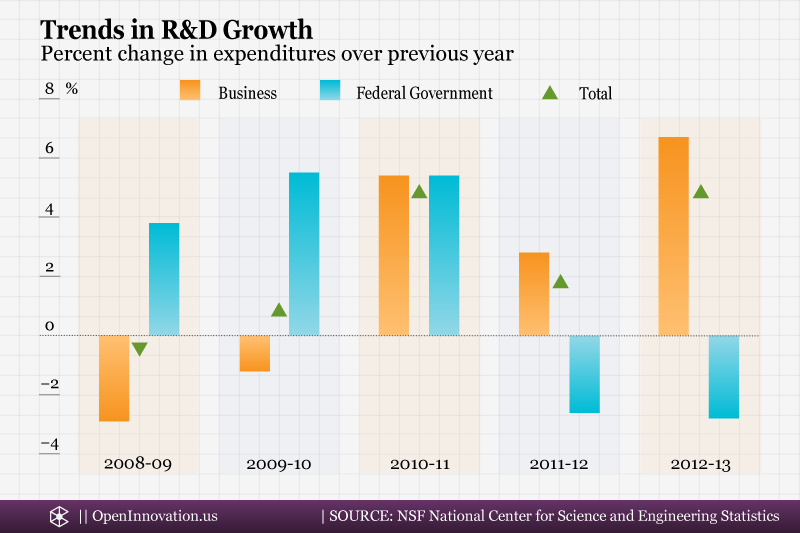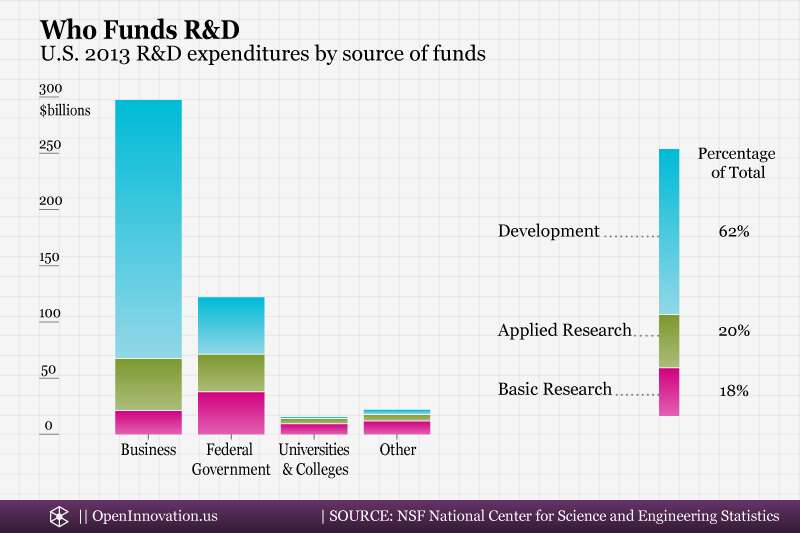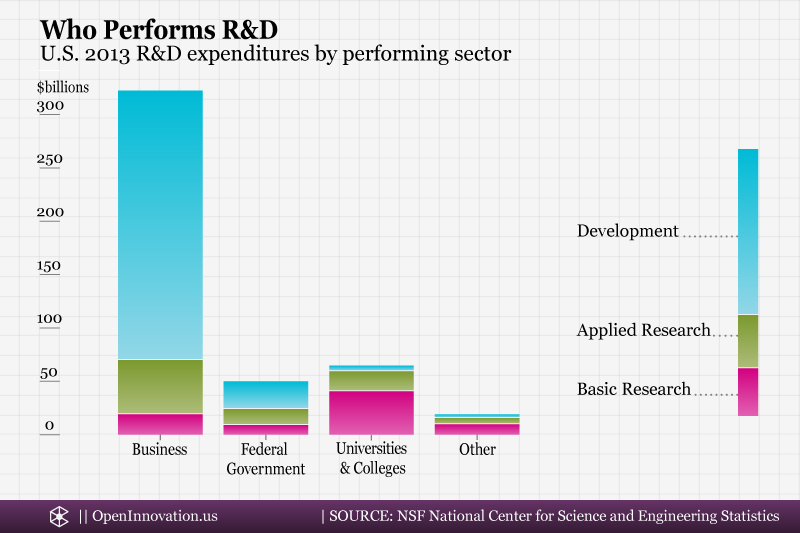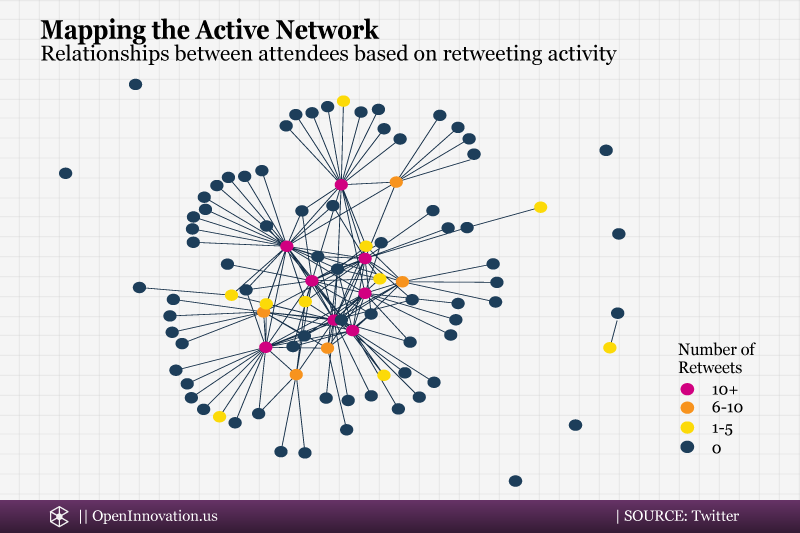Research and Development (R&D) in the United States
By Nadia Carlsten | On November 29, 2015

Data released by NSF in 2015 show that the total R&D performed in the US was $456.1 billion in 2013, a 4.8% increase over the previous year’s expenditures. This growth comes primarily from increased R&D activities in the business sector, which has seen an annual rate of growth of 6.7% between 2012 and 2013. In contrast, expenditures by the federal government have decreased by 2.8% over the same period. It is worth noting that federal obligations for R&D (not shown) are estimated to rise for 2014 and 2015.

The largest source of funding for R&D comes from the business sector, which accounts for 65% of the total R&D performed in the United States in 2013, followed by the federal government with 26.5%. Basic research, which makes up 18% of total 2013 R&D expenditures, was primarily funded by the federal government, while the business sector remains the primary source of funding for applied research (52%) and for development (81%). Universities and colleges, and other entities including state and local governments also play a minor role in funding all types of R&D.

The business sector is the predominant performer of R&D, accounting for over 70% of total R&D in 2013. Most of the business sector R&D activity is focused on development (78%) and applied research (16%). Universities and colleges, which account for only 3.3% of total R&D funding, performed 14% of total R&D and over half of the basic research. More than half of applied research and 88% of development was performed by the business sector. The federal government was responsible for nearly $50 billion of R&D, conducted by federal agencies and federally funded research and development centers (FFRDCs).






